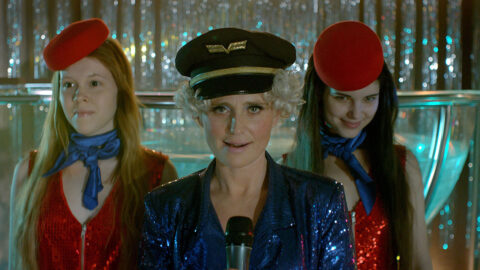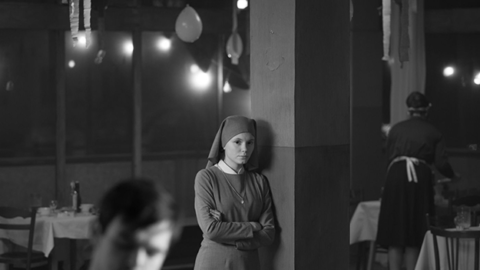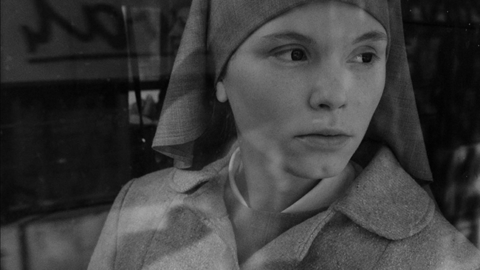Film of the Week: I, Olga Hepnarová
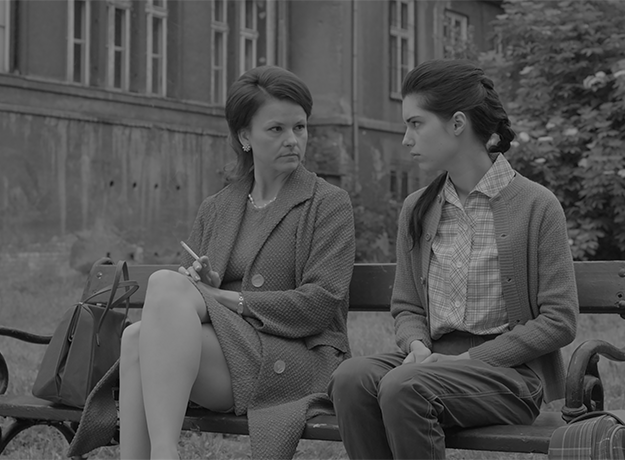
You may not have heard of Olga Hepnarová, but unfortunately it seems that she was something of a pioneer. The last woman to be executed in Czechoslovakia, Hepnarová, then aged 23, was sentenced to hanging in 1975 after driving a truck into a crowd in Prague on 10 July 1973, killing eight people. It so happens that on Wednesday, the day I sat down to watch I, Olga Hepnarová, a man who has now been identified as Khalid Masood did something very similar in London, killing three people and injuring 40 by driving into them on Westminster Bridge, apparently a terror attack in the name of Islamic State. The next day—as I started writing this review—it was announced that someone had attempted a similar action in Antwerp, Belgium, mercifully without resulting in injuries. Last year, on the 14th of July, a truck ploughed into Nice’s Promenade des Anglais, killing 86 people and injuring 434.
The perpetrators of these last three cold-blooded crimes presumably knew, or thought they knew, what they were doing, and no doubt could have all furnished some ideological rationale for their actions. Olga Hepnarová, however, was not a terrorist, simply a very disturbed and embittered young woman, and it’s not quite clear from the new Czech film about her whether she knew exactly what she was doing when she committed her crime; the relevant scene, in this film of unsettlingly disconnected episodes, seems to come out of nowhere, so we can’t be sure whether this is specifically an act she had premeditated, or a spontaneous act of rage of which she hadn’t considered either the precise modus operandi or the results. What is clear is that Hepnarová was intent on killing—she had prepared a statement declaring as much. And, although she was a disturbed loner, it’s perhaps justifiable to call Hepnarová a terrorist too. While she wasn’t fighting under any pre-existing ideological banner, she did have a cause, and it was absolute: herself.
Written and directed by Tomas Weinreb and Petr Kazda—with a story credit to Roman Cilek—I, Olga Hepnarová is a glacially detached account of a short, troubled life. We first meet Olga (Michalina Olszanska) as a young girl, seen lying in bed staring impassively ahead; for much of the time, she has just this absent look, or sometimes the very faintest hint of an enigmatic smirk, as if she knows something that no one else alive could possibly know. Getting up, she gazes into a bathroom mirror, then abruptly throws up. We subsequently learn that she has been taking pills in an attempt to kill herself, but given what we come to know of her, her puking here seems to express a universal disgust at the world.
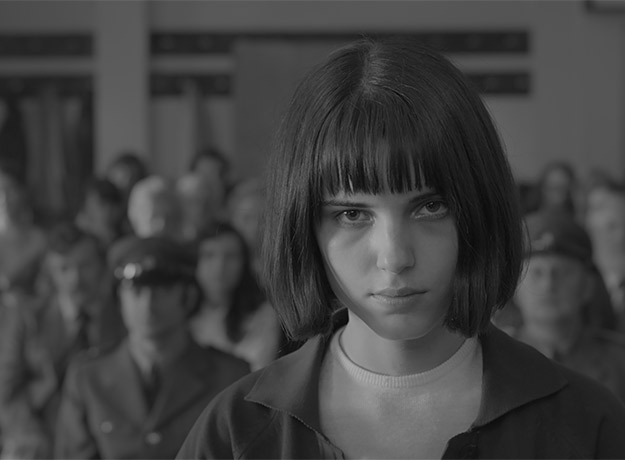
Olga gets no sympathy from her laconic, unloving mother (Klará Melísková), who tells her, “To commit suicide, you need a strong will, my child. Something you certainly don’t have.” Henceforth, Olga seems determined to prove her will and her absolute autonomy. Her life, through the film’s elliptical editing, becomes a series of disconnected phases. The young Olga is moved to a girls’ home, where her aloofness and palpable contempt for her peers earns her a brutal kicking. She writes the first of many self-pitying, self-glorifying letters: “I treat people with scorn . . . I wonder how I’ll feel about them in the future” (the film quotes verbatim from Hepnarová’s written and spoken statement, heard in flat, affectless voiceover). She works in a tire warehouse, then as a truck driver, moving into a small, inhospitable house in the country.
Adopting an unvarying style of self-presentation—bobbed hair, flared trousers, lace-up shoes—she embarks on a series of lesbian relationships. Her most significant is with co-worker Jitka (Marika Soposká). Olga seems completely confident in her sexuality, in one scene boldly lolling in a bar with Jitka, her jacket wide open to expose her naked chest. And yet that’s not how she sees herself: in her writing, she calls herself “a sexual cripple.” We see her going down on a standing Jitka, again seemingly with total confidence—yet the scene is visibly all about Jitka’s pleasure, while we really know nothing of Olga’s. Later, she asks a psychiatrist to provide her with a partner; in the film’s one overt piece of dry humor, he replies, “Unfortunately that’s not possible within our healthcare system.” Olga also has a relationship with an older man, Mira (Martin Pechlat), whether platonic or not we can’t tell; he seems affable and tender enough, if somewhat clueless, in his big, boxy suit, presumably typical for the early ’70s Communist bloc. At any rate, Olga seems somehow content, at least calm, with him as they camp in a rickety tent under torrential rain.
But nothing keeps Olga content for long, and she continues to turn out her declarations, which hit a note somewhere between abjection and pretensions to omnipotence. The most appalling of them, a Unabomber-style profession of faith which she presents as a “factual statement” of her mistreatment, mixes self-pity and the self-glorification of the self-proclaimed eternal victim: “I am as impoverished as the world’s worst drug addict . . . My position is worse than that of a black American. I’ve been lynched a thousand times.” Finally, she declares, “I have a choice—to kill myself, or kill others.” She chooses the latter option—it’s her “verdict,” she says.
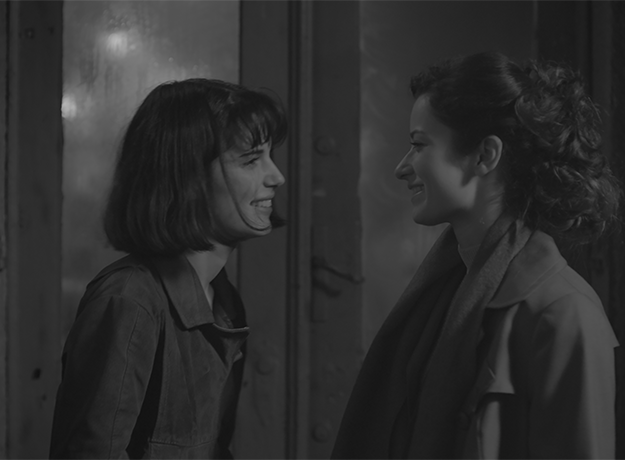
When the killing happens, it comes out of nowhere—as it always does for the victims. Without warning we see them mown down, through the windscreen of Olga’s truck. On trial, she makes another typically grandiose statement in which she bizarrely insists on mystifying the court with a German word to describe herself and others like her: Prügelknabe, or “whipping boy.” Before her execution, her disturbance seems to go into overdrive, as she fantasizes about her “real” father, identifying him as a member of the Vatican Secret Police.
It is argued in court that Olga is schizophrenic—although she refuses to accept madness as a defense—but the film doesn’t propose a diagnosis of her mental state. Olga is allowed to speak for herself through her statements, but the film leaves us to decide whether her condition is a product of a loveless upbringing, of unresolved sexual conflict, or of the conditions of life in Communist-era Czechoslovakia. The only real clues we have to Hepnarová’s interior landscapes, apart from her unreliable statements—closer to public performance than to unmediated cri de coeur—is Michalina Olszanska’s acting. Recently seen as a murderous mermaid in bizarre Polish musical The Lure, Olszanka never breaks stride, nor lowers the intensity of Olga’s demeanor. With her general inscrutability and dandyish way of holding her cigarette—in that arch, somewhat patrician manner usually seen in movies with Nazi officers—Olga has created a routine to show the world, a chilly, supercilious façade. Olszanka makes that contrast strikingly with the extreme vulnerability that Olga also evinces. Much of Olga’s being, as evoked by Olszanka, is in her posture: standing with arms dangling, hunched, and walking in a kind of dogged stomp. But the gawkiness and nerviness Olszanka evokes sometimes seem overstated, and the performance can feel most potent when Olga is still, alone or both, as when she’s seen awkwardly huddled on the bed of her chilly hut, in trousers and primly laced shoes.
Shot in black and white (or rather, oppressive shades of grey ) by Adam Sikora (a recent Skolimowski collaborator), this evocation of Communist-era Eastern Europe visually recalls Pawel Pawlikowski’s Ida, but where that film’s visual starkness sometimes evoked austerity at the sublime end of the spectrum, the look of I, Olga Hepnarová emphasizes coldness and a sort of generalized vacancy, as witness the shot where the camera simply holds at great length on an empty stretch of corridor in Olga’s home. Compositions often emphasize a dehumanizing effect: when Olga is executed, we first see a crowd of observers who step aside one by one until they reveal her dead body hanging there, in the most matter-of-fact way. Vojtech Fric’s elliptical editing together of long, static sequences suggests an overall existence that seems to have no organic meaning or unity; in other words, this makes for an existential account of Hepnarová’s story. In a leitmotif, we keep seeing Olga at the wheel of some vehicle or other, driving often more rapidly than we, or her passengers, are comfortable with—it seems to be her one satisfying mode of emotional release. We often see things from her point of view, looking out at the world through her windscreen.
Following the terrible events in London yesterday and Nice last year, theories will no doubt become current about the kind of mindset that allows a person to commit such killings, as Olga Hepnarová did four decades ago. Experts may conclude that it has to do with the ability to see one’s victims as impersonal and unreal because they’re out there—on the other side of a real or figurative windscreen. Whether or not this cold and somehow inconclusive-seeming film fully captures the complexity of Hepnarová’s malaise, in visual terms at least it diagnoses this state of mental affairs very unsettlingly.
Jonathan Romney is a contributing editor to Film Comment and writes its Film of the Week column. He is a member of the London Film Critics Circle.



